EUCLID
A space mission to map the Dark Universe – In honor of the Greek mathematician Euclid
SHORT DESCRIPTION
The European Space Agency (ESA) Euclid mission is a visible and near-infrared space telescope that studies dark matter and dark energy.
Explaining what dark matter and dark energy are, and how they fit into the standard model of physics, is the great challenge of modern cosmology. Euclid will measure the effects of both dark matter and dark energy by mapping the distribution of galaxies at great distances from us in both space and time, going back in cosmic time to 10 billion years ago.
The Euclid mission is operated by a consortium of 17 countries around the world and was successfully launched on July 1, 2023.
ROLE OF THE OBSERVATORY
Within the Euclid Consortium, the Brera Astronomical Observatory holds important roles in key scientific analyses that will be carried out with Euclid. We are preparing the three-dimensional maps of the galaxy distribution using Euclid’s spectroscopic redshift measurements. These maps will be used to measure the galaxy clustering statistics to infer the properties of dark energy and dark matter. We are leading the effort to characterise the galaxy maps and assess the accuracy of the cosmological constraints. We are also using Euclid to identify galaxy clusters, which are the most massive structures in the Universe, and measure their masses. The growth of galaxy clusters over cosmic history is a key cosmological probe and also helps us understand the physics of galaxy formation.
We contribute to the Euclid Science Ground Segment (SGS), which is responsible for the data reduction and analysis pipeline, as well as to the Science Working Groups (SWG) which lead the scientific analyses. Within the SGS, the Brera Astronomical Observatory plays an important role in defining algorithms that determine the richness of galaxy clusters observed by Euclid, as well as quantifying the probability of belonging of each galaxy to these clusters.
We also collaborate on the project Characterization of the properties of galaxy clusters, which deals, for the clusters detected by Euclid, not only with the determination of the richness of the observed clusters, but also with the calibration of the relationship between the richness and the mass of the clusters.
Within the Rubin-Euclid Derived Data Products Working Group, we have contributed to the definition of a series of so-called joined data products, i.e. observations and products coming from different instruments (including ground-based ones) and with different depths, in order to better validate the detection of clusters and galaxies.
OBSERVATORY STAFF INVOLVED
- Stefano Andreon – Clusters of galaxies – stefano.andreon AT inaf.it
- Ben Granett – Spatial distribution of galaxies – ben.granett AT inaf.it
- Angela Iovino – Evolution of galaxies – angela.iovino AT inaf.it
- Alfonso Veropalumbo – Spatial distribution of galaxies – alfonso.veropalumbo AT inaf.it
- Ilaria Risso – Spatial distribution of galaxies – ilaria.risso AT inaf.it
TIMELINE
2011 –
WEBSITE
EUCLID – Official web site
CONTACT
ben.granett AT inaf.it
CREDITS
Web page content: B. Granett, A. Iovino e S. Andreon per Euclid Team.
LONG DESCRIPTION
Euclid‘s goal is to study dark matter and dark energy.
Dark matter acts gravitationally like ordinary matter, that is, as an attractive force. However, it neither absorbs nor emits light; its existence can only be deduced from the gravitational attraction it exerts on its surroundings.
On the contrary, dark energy acts as a repulsive energy that pervades space and was introduced to explain the accelerated expansion of the Universe.
Explaining what dark matter and dark energy are, and how they fit into the standard model of physics, is the great challenge of modern cosmology.
Euclid will measure the effects of both dark matter and dark energy by mapping the distribution of galaxies at great distances from us in both space and time, going back in cosmic time to 10 billion years ago.
Euclid will observe two distinct cosmological phenomena.
First, it will map the three-dimensional distribution of galaxies, the so-called cosmic web.
Euclid’s telescope has two cameras, one sensitive to visible light and one working in the near-infrared, as well as a spectrograph to measure the redshift of the observed galaxies.
By performing statistical analyses on the resulting galaxy maps, it will be possible to measure so-called acoustic oscillations of baryonic matter, the residual signal of pressure waves in hot plasma in the early Universe.
This signal encodes a reference distance that can be plotted as a function of cosmic time to measure the expansion of the Universe and test models of dark energy.
Second, Euclid will measure the shapes of galaxies very precisely to detect the slight distortions caused by gravitational lensing.
The path of light from distant galaxies bends under the action of gravity as it travels toward us, a phenomenon similar to that of light passing through an optical lens.
The distortion undergone tells us how much matter the light has encountered on its path along the line of sight.
Maps built on the basis of this phenomenon allow us to measure the total distribution of matter, even that which does not emit light, such as dark matter.
In total, Euclid will observe 15,000 square degrees of extragalactic sky, providing excellent images of about 1.5 billion galaxies.
All this data will allow astronomers to study galaxies, both in the near and distant Universe, to better understand how galaxies form and evolve over time. It will also provide us with information about the environment inside galaxy clusters, which are the most massive structures in the Universe.
Closer to home, Euclid will measure stars in the central part of our Milky Way and help us understand how our galaxy formed.
Below is the link to the Observatory archive page for the: Euclid mission
